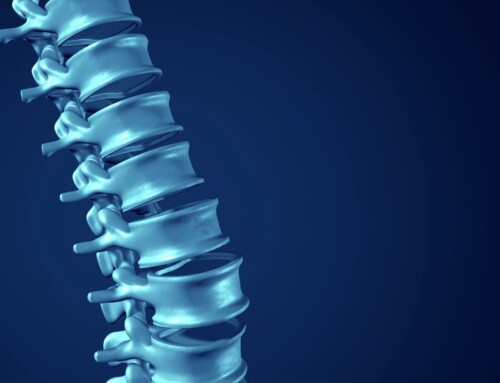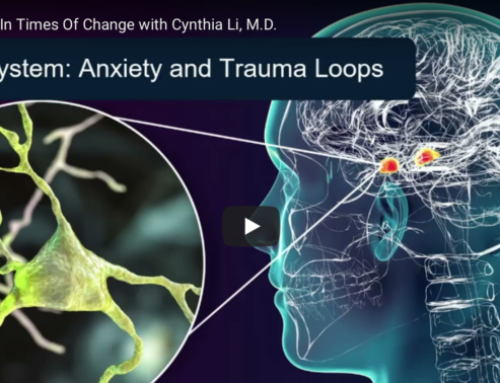Happy LUNAR new year… here’s to the year of the rat!
New beginnings often prompt people to make a list of resolutions, myself included. When I quickly searched the Internet last week for the Top 10 resolutions for 2020, a survey of 2,000 people popped up. The top 3: diet or eat healthier (71%), exercise more (65%), and lose weight (54%).
Simultaneously, a list compiled by Time magazine popped up, entitled, “Top 10 Commonly Broken New Year’s Resolutions.” At the top of that list were: lose weight and get fit, quit smoking, learn a new skill, and eat healthier and diet.
Why does this happen year after year? And how can we possibly add more to our already busy days and turn those into habits?
Perhaps it’s less about doing than about being.
Perhaps it’s more about letting go than about adding in.
Mindset Versus Action
In my recent book, Brave New Medicine, I open the third section with this: “More than a set of actions, healing is a state of being. It requires a shift in mindset, a reorientation toward the mind, body, and spirit. That said, a guideline of actions to follow, if practiced regularly, can open you to this new state of being, transforming your relationship to yourself and your environment.”
I ought to have added: “if practiced intentionally and compassionately.”
Years ago, when I’d set off on my experiment of “How to Get Off the Couch,” I was entirely focused on the Get-Off-the-Couch part. I didn’t realize the most significant word was “How.”
Now having been on my book tour, meeting and receiving emails from people all over the world who want to reclaim their energy, balance, and vitality, to say nothing of continuing to observe and treat patients, I cannot stress enough what I wish I’d known 10+ years ago: that finding a way toward self-compassion, and integrating mind and body, seem to be the 2 key differences between those who heal more quickly and fully, and those who get stuck.
Healing as a Side-Effect
One way I found self-compassion was the deer exercise. This was a practice of qigong (pronounced “chee-gong”), a moving meditation that serves as the foundation for martial arts and Traditional Chinese Medicine. Aside from self-compassion, it would also help me integrate mind with body.
Sit naked in front of a floor-length mirror, the website said. Take a good look at yourself. Notice your body, all the cracks and crevices. Turn inward, embracing all sensations. Let go of any labels of the sensations, like good or bad, painful or pleasant. Simply experience them all as energy. Connect to your sexual essence. If you can’t feel it, visualize it. Then choose a mantra, any phrase that expresses self-love or self-possession, like “I am beautiful,” or “I am strong.” A mantra that is true for everyone is “I am here.” Sit in observance of yourself for 10 minutes, repeating the mantra, even if you have a hard time believing it.
To take it one step deeper, recognize that this practice is no one’s choice but yours. You are choosing to sit with yourself. You are choosing to embrace yourself. A doctor, friend, partner, or family member can suggest this to you. But ultimately, the freedom of choice is yours.
At the root of all chronic conditions is separation. From our environment. From our communities. Or from ourselves. When we connect to ourselves with compassion, healing can happen as if a side-effect.
What can you give up?
To make room for healing, we usually first have to let go. Sometimes it’s an array of busyness that fills our days. Sometimes it’s negative self-talk patterns. Sometimes it’s a goal that may seemingly feel healthy or altruistic, but has become all-consuming and is now draining.
This year, when my family and friends asked me, “What are your resolutions?” I changed my question from goal to surrender: What do I need to let go, because it’s no longer serving my highest good?






Ohh Beautiful Cynthia Li
My story… I Am Your Story almost to the tee but less intense
Cynthia (without the white coat, Ha Ha, I have read your book) I have taken care of people for 22 years and decided to step back to focus on myself. (I’m officially retired) I’ve been going into nature more, watching the sunset and walking intentionally (noticing bird sounds traffic and children playing and listening to my body which I would say I’ve done for awhile but the truth, till I read your book (in literal tears reflecting on my own life and relationships) is I’d lost myself in life situations and be as it is, my spirit/soul is able to to be reconnected with my body and mind. I’m looking forward to returning to my true self with whatever my self might look like at this moment in time and the future.Thank you again for your raw self.May God Bless your sweet soul in ways you haven’t even understood till today.
Octavia Delfs LMT LNMT
I found your journey very hope inspiring. I’ve had chronic fatigue for years and though it’s improved I’m still tired all the time. I do some Qigong exercises very day and I think they help, but they are not the deer form. Do you think it’s important to do that particular set of exercises or will any Qigong movements be helpful?
Thank you.for sharing your experiences.